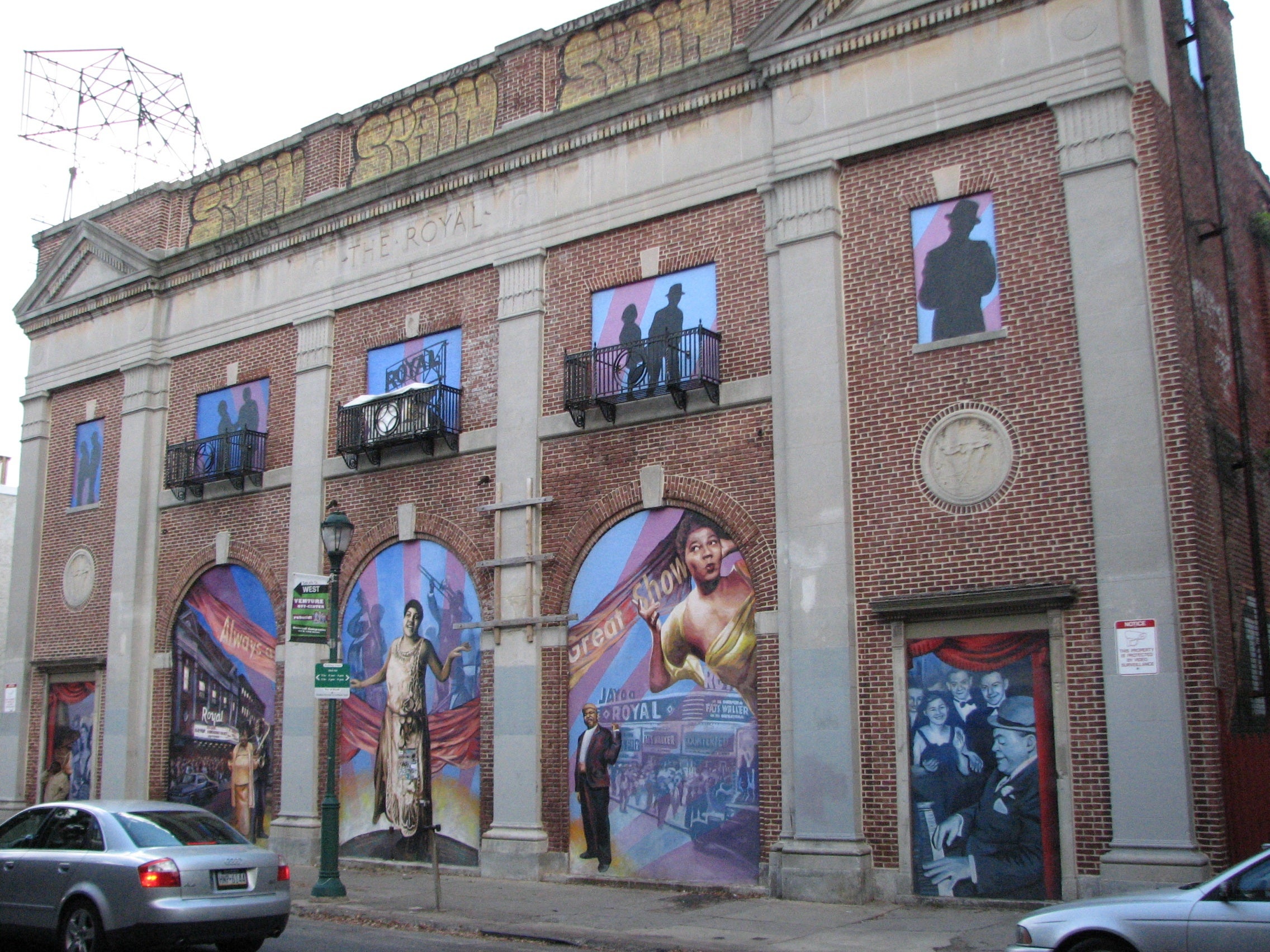Planning Commission seeks more time to consider Royal Theater rezoning

Saying that developers and nearby residents could use more time to hash out potential issues with the proposed redevelopment of the historic Royal Theater on South Street, the City Planning Commission asked for an additional 45 days to consider a bill that would rezone the property to allow the development to move forward.
The plan calls for the full restoration of the theater’s historic facade and the addition of 45 apartment units and 7,600 square feet of retail space facing South Street. It would include 20 parking spaces underground. Carl Dranoff has proposed the redevelopment in partnership with JDavis Architects.
The bill in question, introduced in October by Councilman Kenyatta Johnson, would up-zone the property to CMX-3 and exempt it from some parking and loading requirements.
What is CMX zoning?
CMX is shorthand for Commercial Mixed-Use. The number that follows the abbreviation indicates the level of density and range of uses allowed in the area, with 1 being the lowest and 5 being the highest.
CMX-1 and CMX-2 are designated for small-scale neighborhood storefront retail and office uses.
CMX-2.5 is used for pedestrian-oriented neighborhood commercial corridors, like East Passyunk Avenue.
CMX-3 is considered a community- or region-serving commercial category. It is found along the Central Delaware waterfront and in other neighborhoods where higher-density uses are encouraged.
CMX-4 and CMX-5 are found only in Center City. They permit the tallest buildings, most uses, and greatest density of any commercial zoning category in the city.
This week, the South of South Neighborhood Association (SOSNA), which serves as the Registered Community Organization for the area, will hold a public meeting with the development team and neighbors. Though the project is going through City Council for zoning approval rather than through the Zoning Board of Adjustment, Lauren Vidas of SOSNA said that her group has tried to set up a process that mimics the public meeting and notification requirements of the ZBA.
One group of neighbors on the 1500 block of Kater Street, which is behind the property, is opposed to the proposal in its current form. One of those neighbors, Deena Kobell, said that 80 percent of the Kater Street residents had signed a petition opposing the proposal. They are opposed particularly to the proposed height of the building, 50 feet along Kater Street, and the full lot coverage, which aren’t allowed under the current zoning classification. Kobell said the height of the buildings, which is set back by two feet above the third story, would create a “canyon effect” on Kater.
Kobell also said that residents had purchased their homes with the expectation that the redevelopment of the Royal—which they all support—would comply with the zoning code. Paul Toner, a former SOSNA board member and an attorney who is representing the Kater Street residents, said that the bill represents an instance of spot zoning, and that the developers should be required to go through the zoning board. (In doing so, he cited a PlanPhilly/This Old City article from last week, which gave us a mixture of feelings.)
Lauren Vidas of SOSNA said that the developers have been meeting with neighbors and conducting themselves as transparently as they would if they were going to the ZBA. She said SOSNA would take a vote on the project later this week. But she defended the bill against charges of arbitrary spot zoning.
“If [a project] goes to the ZBA, it goes to the ZBA,” Vidas said at the Commission meeting. “If it goes to City Council, it goes to City Council. Those are both valid zoning processes.”
The South Street West Business Association has also said that it supports Dranoff’s redevelopment proposal.
For its part, the Planning Commission staff recommended that the bill be approved. Steve Cobb, a representative of Councilman Johnson’s office, said there had already been more meetings about the redevelopment of the property than there would be for many zoning variances. In addition, there will be a hearing in City Council’s Rules Committee on December 2nd.
In the end, the Commissioners voted to ask for additional time before making a recommendation. Council cannot take final action on the bill until it gets that recommendation. The Commission’s next meeting is on December 9th.
“My hunch,” said Commission Chairman Alan Greenberger, “is that we ought to let the process unfold.”
The Royal Theater has been vacant since the 1970s.
WHYY is your source for fact-based, in-depth journalism and information. As a nonprofit organization, we rely on financial support from readers like you. Please give today.



